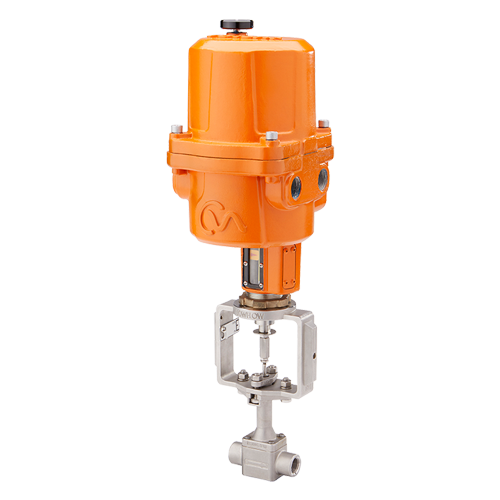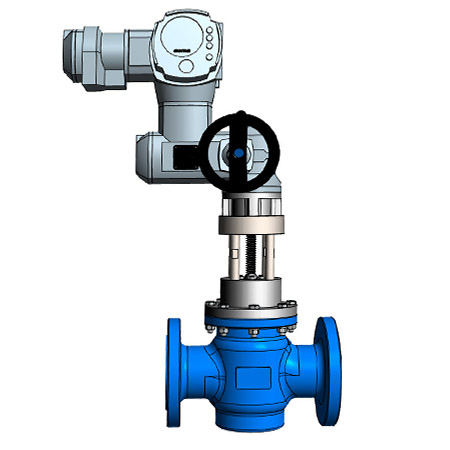Picking the Right Control Valves: A Guide to Ideal System Efficiency
Picking the Right Control Valves: A Guide to Ideal System Efficiency
Blog Article

Maximize Energy Cost Savings and Comfort With Advanced Building Automation Controls
In the world of contemporary design and facility management, the assimilation of sophisticated building automation controls stands as a critical improvement. The convergence of innovation and sustainability has birthed a brand-new period where power effectiveness, comfort optimization, and functional streamlining are no more possible truths but remote ambitions. By taking advantage of the power of automation, buildings can adapt, react, and develop in manner ins which were as soon as unimaginable. The potential for considerable energy financial savings and improved comfort is not just a possibility yet a promise waiting to be satisfied. This paradigm change in structure management holds the vital to unlocking a globe where environmental conscientiousness and resident health harmoniously exist side-by-side within the walls of our structures.
Energy Performance Benefits
Energy effectiveness advantages can significantly decrease power intake and functional costs in buildings. By carrying out energy-efficient techniques and technologies, building owners and drivers can attain substantial cost savings while likewise contributing to environmental sustainability. Among the primary advantages of enhancing power performance in buildings is the reduction of energy costs. Energy-efficient systems, such as advanced building automation controls, can maximize using sources like lighting, home heating, and air conditioning, causing reduced energy expenses in time.
Additionally, boosted power effectiveness can extend the lifespan of structure devices and systems. By running extra effectively, cooling and heating systems, lighting fixture, and other building parts experience less wear and tear, resulting in lowered upkeep and replacement costs. Additionally, energy-efficient buildings typically regulate greater property worths and rental prices, giving lasting monetary benefits to owners.
Additionally, power effectiveness can enhance resident comfort and productivity. Effectively regulated interior environments with ideal lights and thermal conditions develop a more favorable and pleasant office, causing improved employee contentment and performance. Generally, the energy performance benefits connected with advanced structure automation controls are diverse, incorporating cost savings, ecological stewardship, and owner well-being.
Improved Convenience Control
Enhancing convenience control in building environments needs an innovative integration of sophisticated automation systems for optimum occupant wellness. By making use of advanced building automation controls, centers can tailor the indoor setting to meet the particular requirements and preferences of residents. These systems allow exact guideline of lights, air flow, and temperature level, producing a comfortable and productive ambience. Owner complete satisfaction and efficiency are closely linked to thermal convenience, making it necessary to have systems in position that can adjust to transforming conditions in real-time.
Enhanced convenience control surpasses basic temperature level modifications. It includes attributes such as individualized setups, tenancy sensing units, and all-natural light utilization to create a responsive and vibrant atmosphere. By incorporating these innovative controls, buildings can not just enhance convenience but additionally enhance power effectiveness by optimizing system procedures based on real tenancy and usage patterns. Ultimately, focusing on resident comfort via sophisticated automation systems causes a more pleasurable and healthier interior atmosphere.
Functional Efficiency Improvements

Additionally, the implementation of real-time tracking and analytics tools allows structure operators to recognize power inadequacies and operational abnormalities promptly. By continually monitoring power use patterns and system performance metrics, adjustments can be made in real-time to maximize power consumption and make sure peak functional performance. control valves. Additionally, incorporating demand action approaches into building automation controls can additionally boost operational effectiveness by dynamically readjusting energy usage based upon grid conditions and pricing signals
Indoor Climate Optimization
Efficient interior climate optimization is a basic aspect of building automation controls, making certain residents' comfort and health while taking full advantage of power financial savings. By utilizing advanced sensing units and controls, developing automation systems can continuously check and adjust temperature, moisture levels, air quality, and ventilation to create an optimal interior setting. Maintaining comfy and constant problems not only improves resident fulfillment yet additionally boosts productivity and overall health.
Indoor climate optimization also plays an essential function in energy effectiveness. By fine-tuning cooling, air flow, and heating systems based upon real-time information and tenancy patterns, constructing automation controls can dramatically minimize energy usage - control valves. Executing approaches such as demand-controlled air flow and thermal zoning can help decrease energy waste while guaranteeing that each area of the building receives the necessary conditioning.

Sustainable Atmosphere Production
Structure automation manages not only optimize interior environment conditions for energy efficiency and passenger comfort but also lay the foundation for creating a lasting environment through strategic management of resources and systems. By integrating sophisticated structure automation innovations, such as sensing units, actuators, and intelligent software application, centers can check and change energy use in real-time to decrease waste and decrease their carbon impact. These systems enable anticipating upkeep, determining possible issues before they rise and maximizing equipment performance to enhance long life and effectiveness.
In addition, lasting atmosphere production prolongs past energy monitoring to include water preservation, waste decrease, and interior air quality enhancement. check my site Building automation controls can manage water use, find leaks, and make certain correct waste disposal methods, adding to total sustainability efforts. Additionally, by controlling and keeping track of air flow and filtering systems, these modern technologies improve resident health and performance while lowering energy consumption linked with a/c procedures.
Conclusion
In conclusion, advanced building automation regulates deal considerable benefits in regards browse this site to energy savings, comfort control, operational performance, indoor climate optimization, and developing a sustainable atmosphere. By implementing these controls, structures can accomplish optimum performance while decreasing energy intake and improving resident comfort. It is obvious that the usage of innovative automation modern technology is essential in improving structure efficiency and creating a more sustainable future.
Energy effectiveness advantages can considerably lower energy consumption and operational expenses in structures. On the whole, the power performance advantages associated with sophisticated structure automation controls are diverse, incorporating cost savings, he has a good point environmental stewardship, and owner well-being.
Furthermore, integrating need feedback strategies into structure automation controls can additionally improve functional effectiveness by dynamically changing power usage based on grid problems and prices signals.
Structure automation regulates not just maximize interior environment conditions for energy performance and resident convenience yet also lay the structure for developing a sustainable environment via critical administration of systems and resources.In verdict, advanced structure automation controls deal considerable advantages in terms of energy financial savings, comfort control, functional efficiency, interior climate optimization, and creating a lasting environment.
Report this page